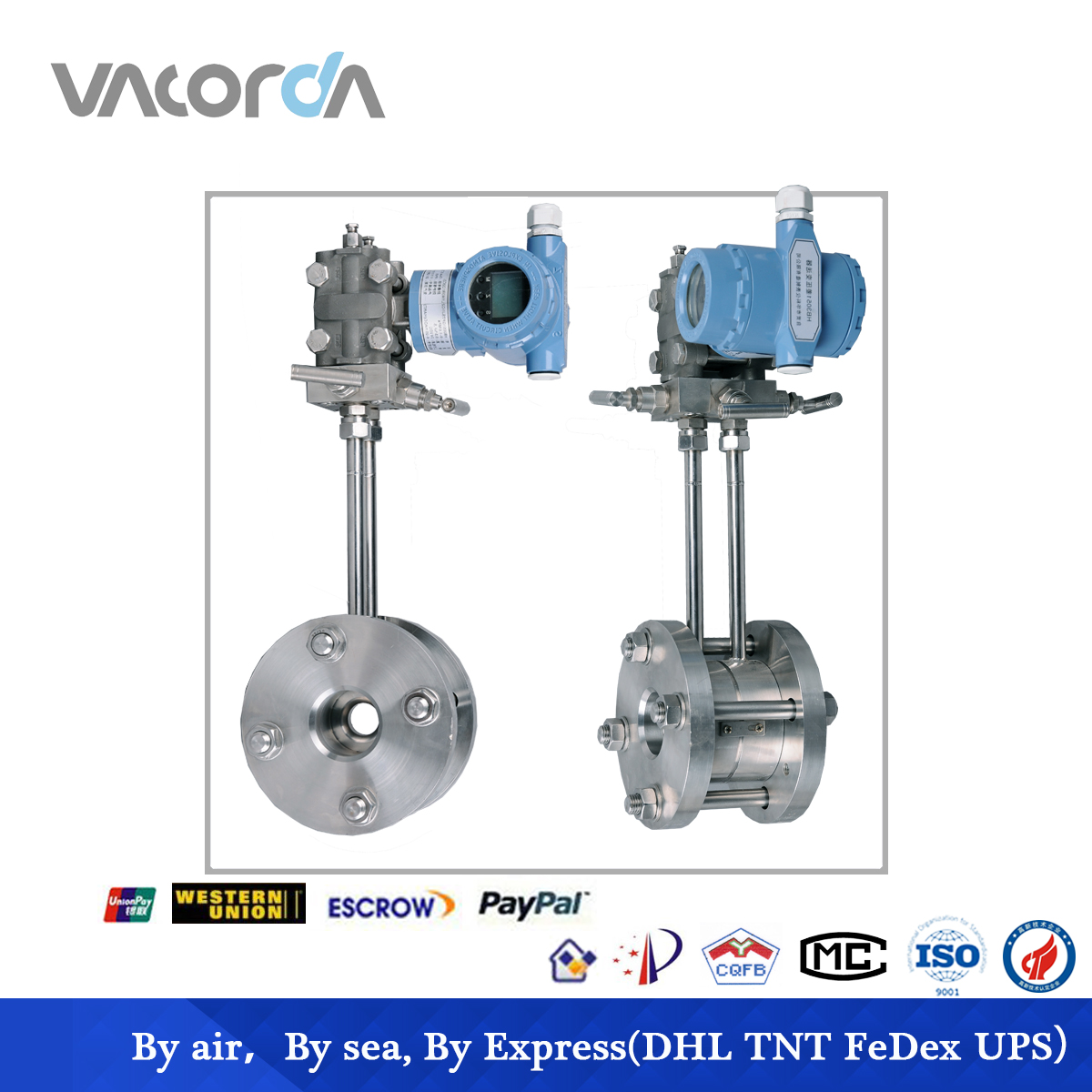Differential pressure flow meters are widely used in closed pipeline flow measurement, such as single-phase, miscible, clean, dirty, viscous flow, etc.; working status: atmospheric pressure, high pressure, vacuum, room temperature, high temperature, low temperature, etc.; pipe diameter: a few millimeters Up to a few meters; flow conditions: subsonic speed, sound waves, pulsating flow, etc. Its consumption in various industrial sectors accounts for about 1/4/1/3 of the total consumption of flow meters.A throttling device is installed on the gas flow pipe, which is equipped with an orifice plate, and a circular hole is opened in the center. Its diameter is smaller than the inner diameter of the pipe. The gas flows forward steadily before the orifice plate. The pore diameter becomes smaller and the cross-sectional area shrinks, which disrupts the steady flow state. As a result, the flow rate will change, the speed will increase, and the static pressure of the gas will decrease. Therefore, a pressure drop occurs before and after the orifice, that is, the differential pressure (the cross-section in front of the orifice is large). Where the pressure is high, the pressure is small where the cross-section of the orifice is small). The size of the differential pressure has a definite numerical relationship with the gas flow rate, that is, when the flow rate is large, the differential pressure is large, and when the flow rate is small, the differential pressure is small. The flow rate is proportional to the square root of the differential pressure.The differential pressure flowmeter is an instrument that calculates the flow rate based on the pressure difference generated by the flow detector installed on the pipeline, the known fluid conditions, and the geometric dimensions of the measuring part and the pipeline.The differential pressure flowmeter consists of a primary device (detector) and a secondary device (differential pressure conversion and flow display instrument). Differential pressure flow meters are usually classified in the form of detectors, such as orifice flow meters, venturi flow meters, uniform velocity tube flow meters, and so on.The secondary device is a variety of mechanical, electronic and mechanical voltmeters, differential pressure transmitters and flow display instruments. It has developed into a large-scale instrument with a high degree of serialization (serialization, versatility and standardization). It can not only Measure flow parameters, but also measure other parameters (such as pressure, material level, density, etc.).According to the working principle, the measuring components of the differential pressure flowmeter can be divided into three categories: throttle valve device, hydraulic resistance type, centrifugal type, dynamic head type, dynamic head gain type and jet flow type.According to the degree of standardization, the test part can be divided into two categories: standard part and non-standard part.The so-called standard test components are designed, manufactured, installed and used according to standard documents, and their flow values and estimated measurement errors can be determined without actual flow calibration.The maturity of non-standard test components is not high and has not yet been included in international standards.Differential pressure flow meters are one of the most widely used flow meters, occupying the first place among various flow meters. In recent years, due to the emergence of various new types of flowmeters, the utilization rate has gradually decreased, but it is still the most important type of flowmeter.Advantage:The main research results are as follows: (1) The most widely used orifice flowmeter has strong structure, stable and reliable performance and long service life.(2) The scope of application is very wide, and there is no other kind of flowmeter that can compare with it.(3) The detectors, transmitters and display instruments are produced by different manufacturers, which is convenient for scale economic production.shortcoming:The main results are as follows: (1) The measurement accuracy is generally low.
Post time: 21-09-21
